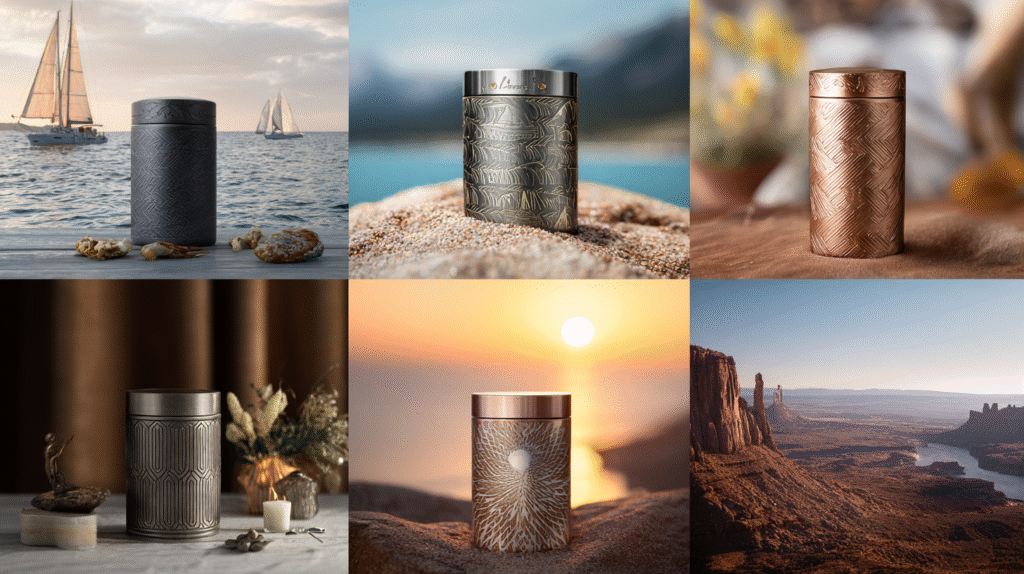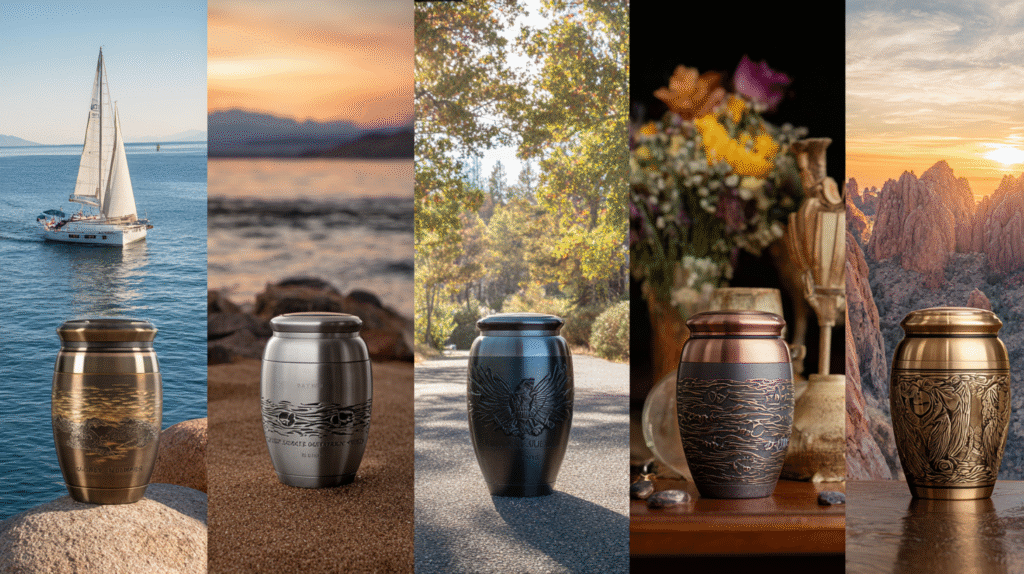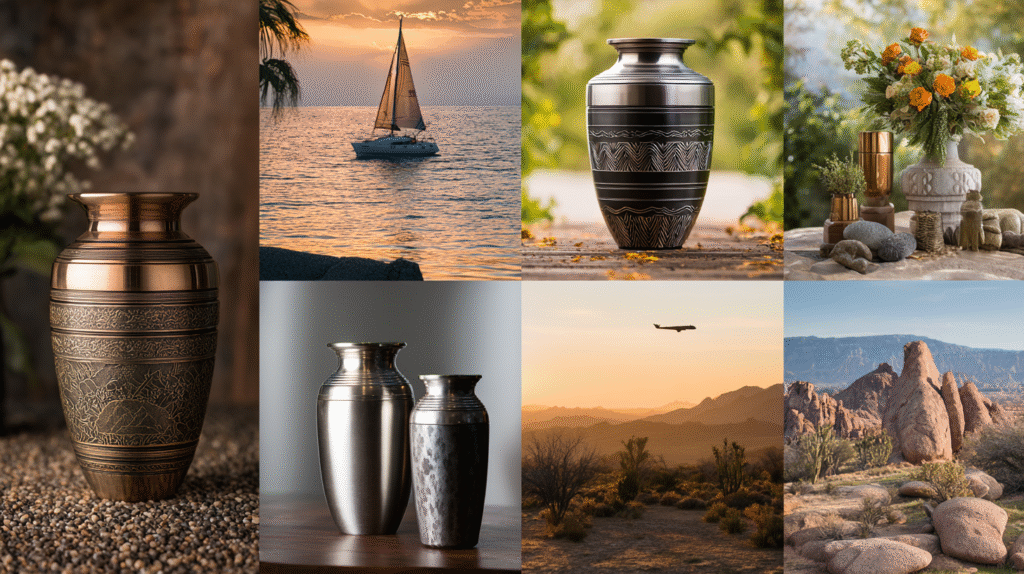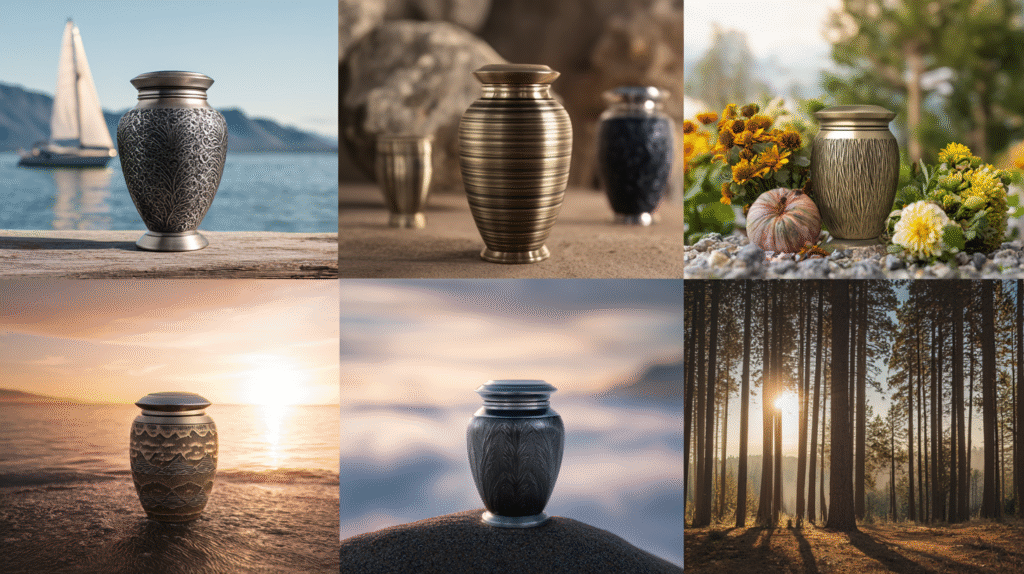6 Surprising Ways USA Scatter Ashes and How Urns Make Each Memorial Unique

Saying goodbye is never easy. But for families across the United States, the journey of memorializing a loved one has transformed. More Americans are now choosing cremation, and with it, a deeply personal decision arises: how and where should the ashes be scattered?
Table of Contents
According to the National Funeral Directors Association, cremation rates are climbing steadily, expected to surpass 50% nationwide by 2035. This growing trend has prompted families to explore more meaningful and symbolic urns for ashes and scattering ceremonies, tailored to their loved one’s story.
At Dei Gratia Urns, we understand that choosing the right way to say farewell can be overwhelming. That’s why we’re breaking down 6 heartfelt ways Americans scatter ashes—and what you must know legally and emotionally before planning your tribute.

1. Scattering Ashes Over Water – A Farewell that Floats into Forever
Water burials are timeless, symbolic, and deeply spiritual. In many cultures, water represents eternity and rebirth, which is why lakes, rivers, and seas are common choices for scattering cremated remains.
To do this respectfully and legally:
- Remains must be released at least 3 nautical miles from land under the Clean Water Act.
- Environmental Protection Agency (EPA) must be notified within 30 days.
- Biodegradable urns such as our Ocean Embrace series gently float before dissolving, creating a peaceful farewell.
In states like Texas, ashes must be removed from their container before scattering—unless it’s biodegradable.

2. Aerial Scattering – Taking Memories to the Sky
Imagine releasing your loved one’s ashes from a hot air balloon or airplane—above the mountains, deserts, or coastlines they once adored. It’s both breathtaking and poetic.
Families often hold a small ceremony on the ground while the aircraft ascends. Though Federal Aviation Administration rules are generally lenient, no objects that could harm people or property may be dropped—ashes are acceptable but containers are not.
In Colorado and Arizona, aerial scatterings are becoming increasingly popular due to their vast scenic backdrops.
Tip: Contact licensed professionals and confirm local permissions. Some states may require pilot registration for such ceremonies.

3. Raking Ashes – Returning to the Earth with Gentle Hands
Raking involves gently spreading ashes into soil using small rakes. This is typically done in memorial gardens or specially designated spaces in cemeteries.
This ceremony:
- Allows multiple family members to participate.
- Encourages storytelling and sharing memories.
- Supports eco-conscious values.
In places like Vermont and Oregon, community gardens offer serene and legal spaces for raking ceremonies. Just ensure you have written permission from the property owner or cemetery.

4. Trenching – For Sacred Grounds and Personal Places
Want to keep the final resting spot rooted in meaning? Trenching involves digging a shallow pit in a place of emotional importance—like under a favorite tree, near a family cabin, or a beloved trail.
In Washington State, trenching is often used in state parks, with permits. Many use biodegradable urns that dissolve over time, symbolizing life’s return to nature.
Variation: Ringing, where a trench is dug around a plant, letting ashes nurture life.

5. Casting – A Whisper into the Wind
Casting ashes is perhaps the most commonly visualized farewell—scattering remains into the wind over open land, ocean cliffs, or scenic hills.
But don’t be fooled by the simplicity. The emotional weight is immense. With Dei Gratia’s scattering tube urns, families find comfort in the control and grace the moment provides.
Watch wind direction before scattering—it sounds trivial, but it matters.
In California, if scattering ashes outside of licensed facilities, you may need to register as a Cremated Remains Disposer and get a Disposition Permit.

6. Green Burials – Honoring Life by Giving Back to Nature
Eco-conscious families are turning to green burials. These involve placing ashes in a biodegradable urn and burying it in nature.
Popular in states like Colorado, California, and North Carolina, green burials:
- Use non-toxic, plant-based urns.
- Include rituals like seed scattering or butterfly releases.
- Require permission on private land or special green cemeteries.
At Dei Gratia Urns, our EcoBloom collection features recyclable materials ideal for such burials. It’s a sustainable way to celebrate life while healing the Earth.
Final Thoughts – Choosing the Right Urn Makes All the Difference
From windswept cliffs to peaceful rivers, each scattering ceremony holds deep emotional value. But remember—the urn you choose can enhance the dignity, symbolism, and legality of your tribute.
Our handcrafted collection at Dei Gratia Urns offers:
- Biodegradable urns for water or soil.
- Scattering urns with user-friendly lids and travel-safe features.
- Custom designs that reflect your loved one’s passions and legacy.
Before planning any scattering ceremony, always check your local and state laws. Consult your funeral director or crematory—they’re here to help.
Because at Dei Gratia Urns, we believe honoring ashes is not just a ritual—it’s a sacred goodbye wrapped in love, memory, and grace.
